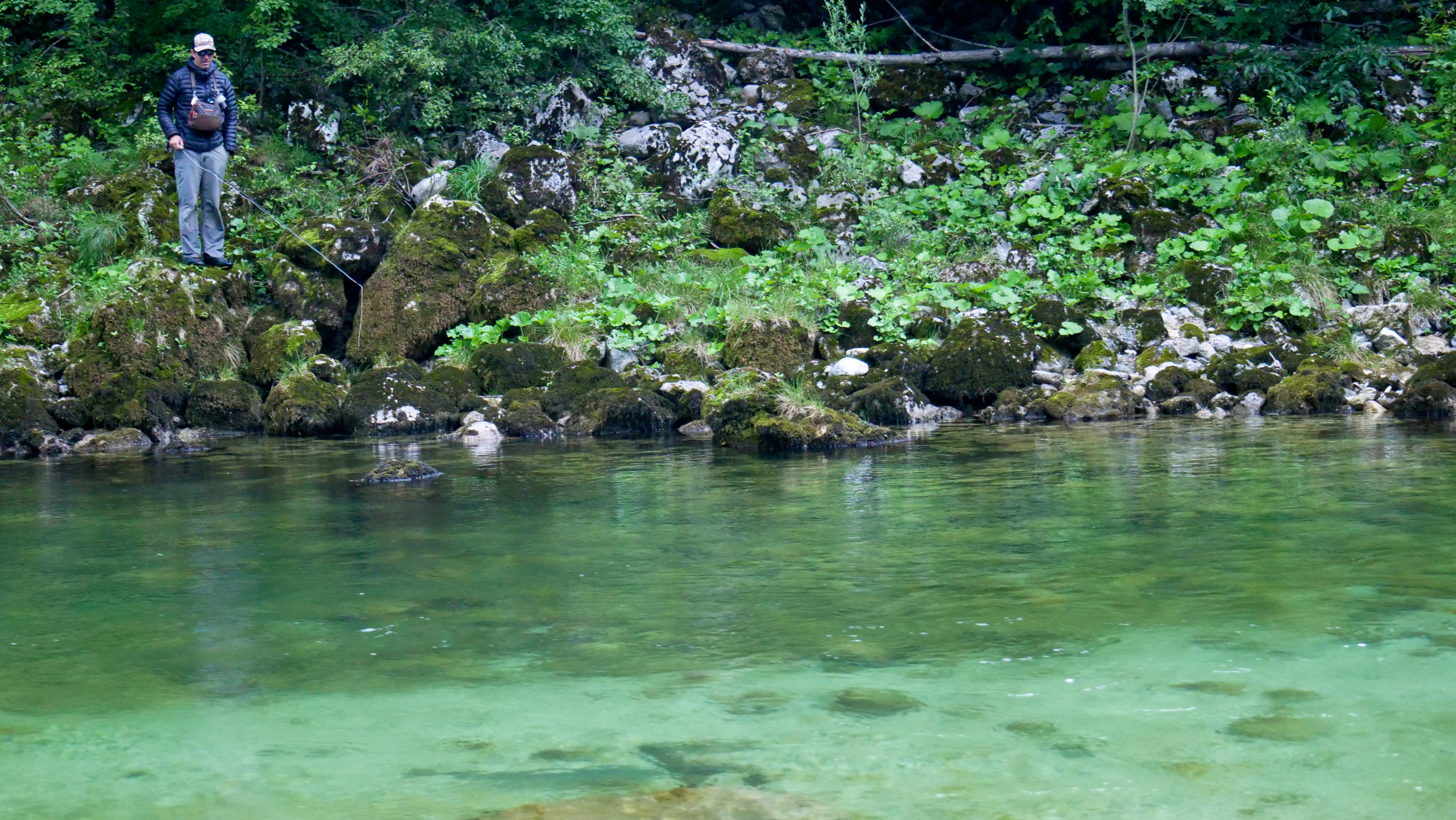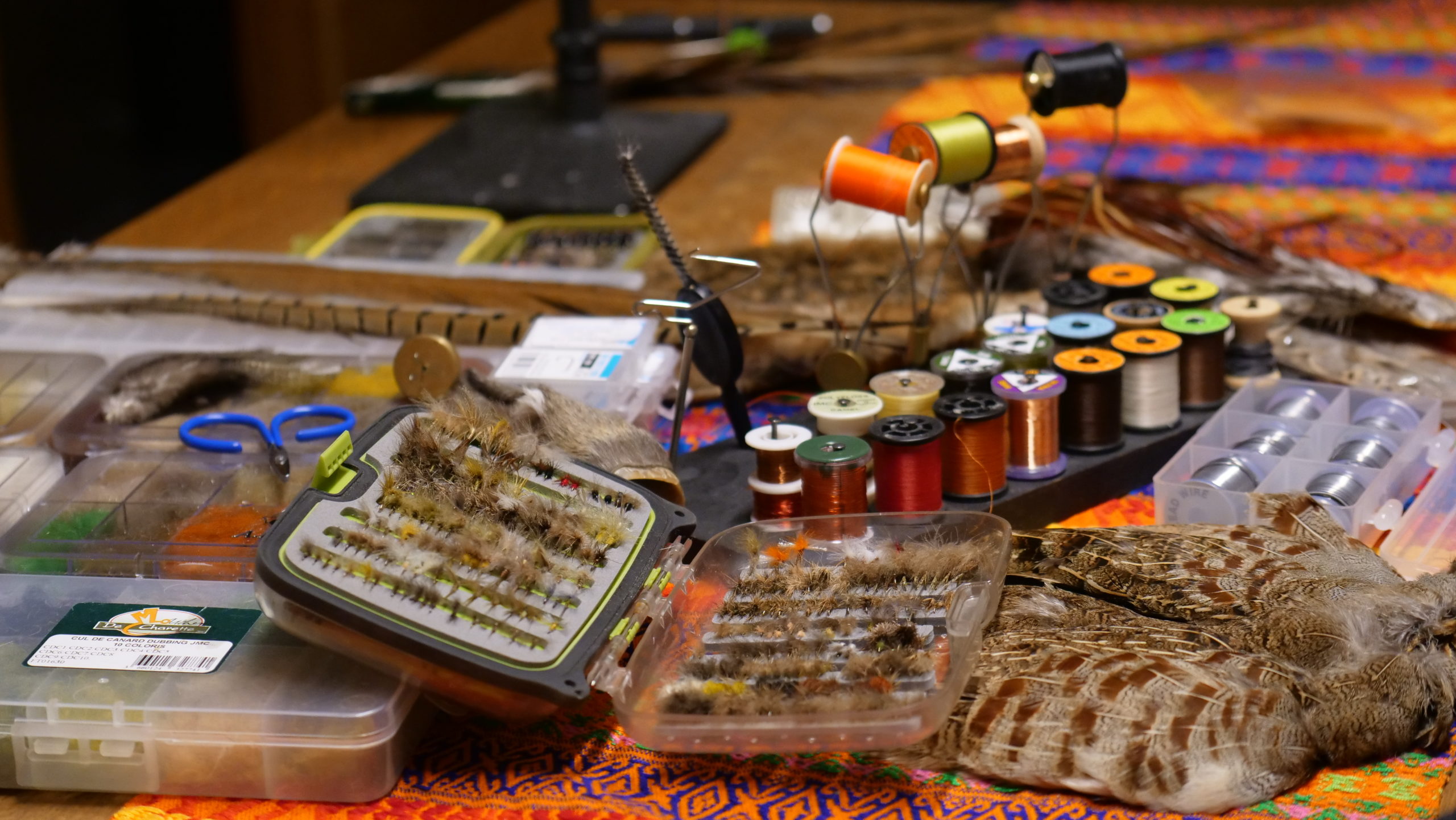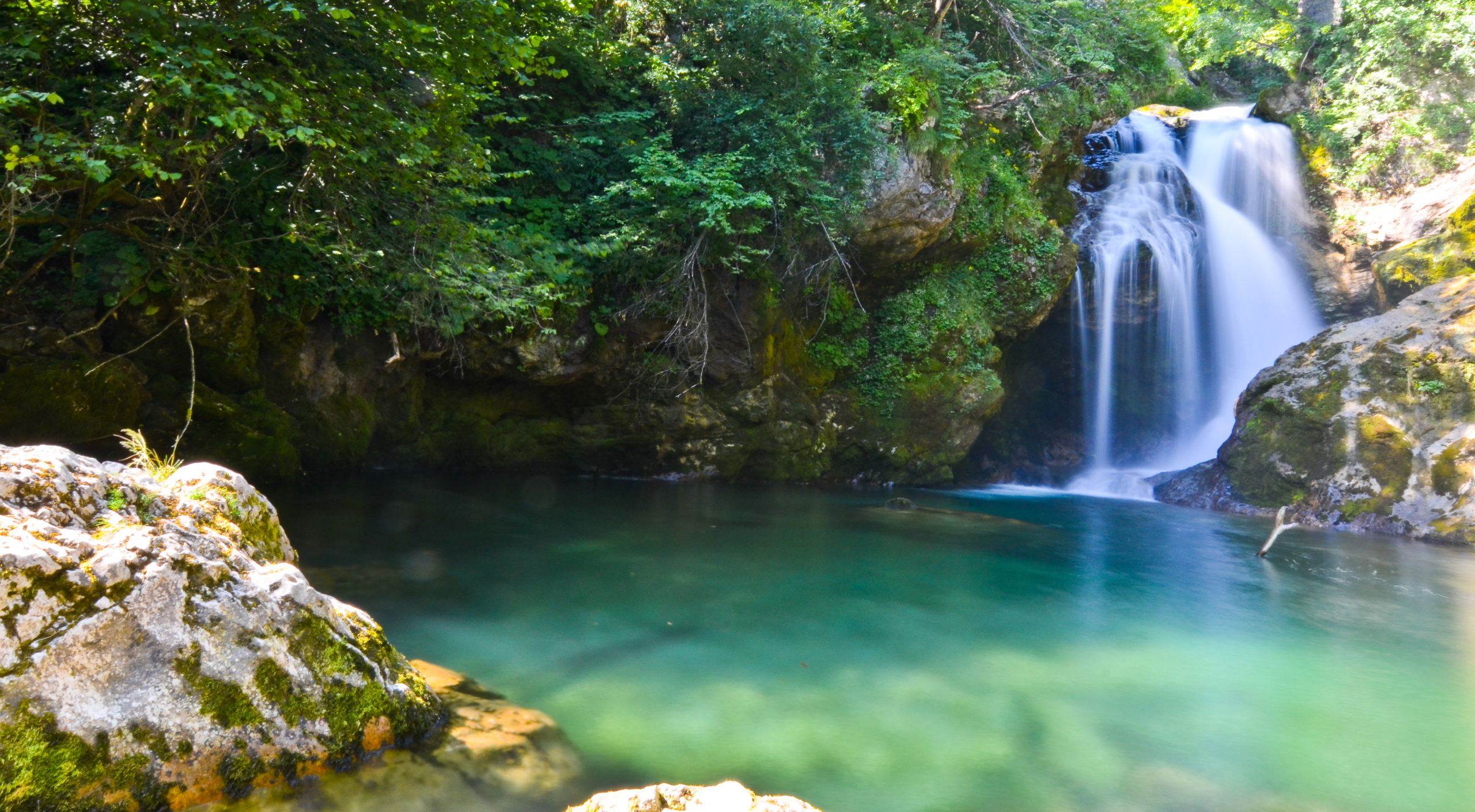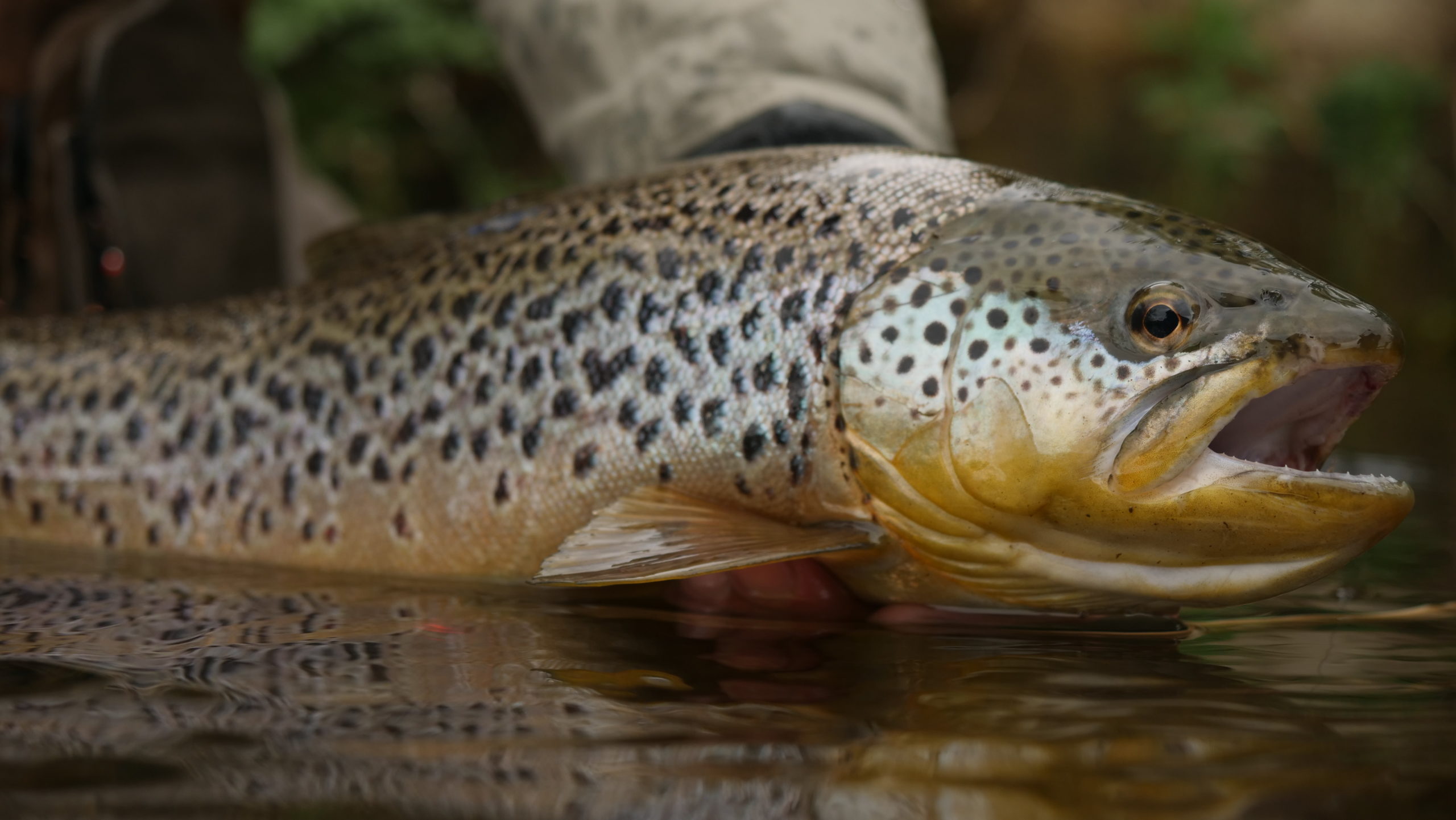
Introduction to Fly Fishing
Fly fishing is a sport fishing technique that involves presenting an artificial imitation of an insect to entice the fish.
It is most often practiced in wild, natural, and majestic environments, offering both challenge and serenity to those who pursue it.
More than just a technique, fly fishing is often considered an art form — from the graceful casting motion to the craft of tying delicate flies that imitate nature’s beauty.
It can be practiced in rivers, lakes, or even the sea. Whether fishing from the shore, a boat, or a float tube, the possibilities are limitless.
Dry Fly Fishing
Dry-fly fishing is a technique that consists of catching a fish using a floating artificial fly, imitating an aquatic or terrestrial insect resting on the surface of the water.
When a fish rises to the surface, it indicates that it has taken either your imitation fly or a natural insect.
This method is most effective when you observe insects flying or notice surface activity from feeding fish.
At dusk, large numbers of insects often hatch simultaneously, creating what anglers call the evening rise — a magical moment when fish feed eagerly at the surface.
It’s the perfect time to cast your dry flies and experience some of the most thrilling moments in fly fishing.


Dry Fly Fishing
Dry-fly fishing is a technique that consists of catching a fish using a floating artificial fly, imitating an aquatic or terrestrial insect resting on the surface of the water.
When a fish rises to the surface, it indicates that it has taken either your imitation fly or a natural insect.
This method is most effective when you observe insects flying or notice surface activity from feeding fish.
At dusk, large numbers of insects often hatch simultaneously, creating what anglers call the evening rise — a magical moment when fish feed eagerly at the surface.
It’s the perfect time to cast your dry flies and experience some of the most thrilling moments in fly fishing.

Streamer Fishing
Streamer fishing is a dynamic technique that involves imitating a small aquatic creature—such as a minnow, leech, or small fish—to trigger the predatory instinct of larger fish.
It allows you to target carnivorous species and experience powerful, aggressive strikes.
To fish effectively with a streamer, you’ll need appropriate equipment, including a rod with sufficient power and a line suited to this technique.
The method consists of retrieving the fly with irregular jerks or varied speed, to mimic the erratic movement of prey.
When a fish takes the fly, the strike is often sudden and intense, offering a thrilling experience for any angler.

Nymph Fishing
Nymph fishing is a highly effective fly fishing technique that involves presenting imitations of aquatic insects at the nymph stage, just below the surface or near the riverbed.
It can be practiced “on the line”, where bites are detected by watching the movement of the line, or with the help of a small strike indicator, while carefully covering areas and currents where fish are likely to feed.
Another approach is sight nymphing, which consists of spotting the fish first, then analyzing its feeding behavior to present a precisely adapted imitation.
This method is technical and demanding, but also highly rewarding, offering strong sensations and requiring the angler to refine both observation and presentation skills.
Streamer Fishing
Streamer fishing is a dynamic technique that involves imitating a small aquatic creature—such as a minnow, leech, or small fish—to trigger the predatory instinct of larger fish.
It allows you to target carnivorous species and experience powerful, aggressive strikes.
To fish effectively with a streamer, you’ll need appropriate equipment, including a rod with sufficient power and a line suited to this technique.
The method consists of retrieving the fly with irregular jerks or varied speed, to mimic the erratic movement of prey.
When a fish takes the fly, the strike is often sudden and intense, offering a thrilling experience for any angler.


Casting Techniques
There are many different casting techniques in fly fishing, each adapted to specific situations and environments.
The basic principle, however, remains the same: to generate enough power and control in the line to deliver the fly accurately to the desired spot.
Depending on the fishing conditions, various casting styles can be used, such as:
-
Basic cast (e.g. TLT, French cast, etc.)
-
False cast
-
Roll cast (D-loop)
-
Reverse cast
-
Double haul cast
-
and more…
Each of these casting techniques has its own purpose and is used to adapt to wind, space constraints, or water conditions, ensuring a precise and efficient presentation of the fly.
Fly Tying
Fly tying is the art of creating artificial fly patterns that imitate natural insects, using hooks, thread, feathers, fur, and various synthetic materials.
Each fly is carefully crafted to mimic the appearance and movement of the insects that fish feed on.
While tying your own flies is an essential and creative part of fly fishing tradition, it is also possible to purchase high-quality flies in specialized shops for those who prefer ready-made patterns.


Fly Tying
Fly tying is the art of creating artificial fly patterns that imitate natural insects, using hooks, thread, feathers, fur, and various synthetic materials.
Each fly is carefully crafted to mimic the appearance and movement of the insects that fish feed on.
While tying your own flies is an essential and creative part of fly fishing tradition, it is also possible to purchase high-quality flies in specialized shops for those who prefer ready-made patterns.

Choose Your Fishing Spot
To choose your fishing spot, you must first define your objective.
This means selecting the right body of water according to the species you want to target.
Then, consider the type of environment you’d like to enjoy during your outings — the size of the fish, whether you prefer wild or stocked species, and the overall ambiance of the location.
It’s also important to assess your skill level, as some fishing areas can be more technically demanding than others.
Certain rivers and lakes experience high fishing pressure, making fish more alert and cautious, and therefore more challenging to catch.
Gear in Switzerland
If you’re looking for more information about fly fishing in Switzerland, take a look at Swissflies.
They offer a wide selection of fly fishing equipment, including flies, fly-tying materials, and other specialized gear.
You’ll also find a unique collection of historical flies, showcasing the rich tradition of Swiss fly fishing.


My Top Spots
I love to fish and guide my clients across a wide variety of waters, each offering its own unique charm.
In my region, the rivers I favor most are:
La Sarine, La Bienne, L’Ain, La Loue, and Le Doubs.
When it comes to lakes, I must admit a particular fondness for Derborence, a true gem in the Valais.
That said, I also fish and guide on many other beautiful alpine lakes throughout the region.
My Fishing Trips
Whether for trout, saltwater species, or exotic fish, I’ve had the privilege of traveling the world in pursuit of fly fishing adventures.
From Iceland to Kiribati, each destination offers its own magic — here are just a few of the countries I love to explore:
Europe
Italy, Spain, France, Germany, Austria, Slovenia, Bulgaria, Iceland, Norway
Worldwide Freshwater
New Zealand, Argentina, Brazil, Chile
Worldwide Saltwater
Seychelles, Maldives, Sudan, Kiribati, Guatemala, French Polynesia
If you’d like to organize a fishing trip or need information about a destination, please don’t hesitate to contact me — I’d be happy to help you plan your next fly fishing adventure.

My Fishing Trips
Whether for trout, saltwater species, or exotic fish, I’ve had the privilege of traveling the world in pursuit of fly fishing adventures.
From Iceland to Kiribati, each destination offers its own magic — here are just a few of the countries I love to explore:
Europe
Italy, Spain, France, Germany, Austria, Slovenia, Bulgaria, Iceland, Norway
Worldwide Freshwater
New Zealand, Argentina, Brazil, Chile
Worldwide Saltwater
Seychelles, Maldives, Sudan, Kiribati, Guatemala, French Polynesia
If you’d like to organize a fishing trip or need information about a destination, please don’t hesitate to contact me — I’d be happy to help you plan your next fly fishing adventure.

